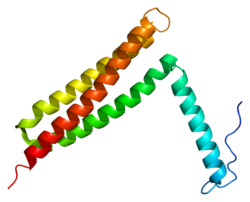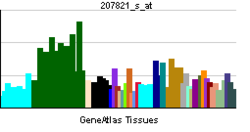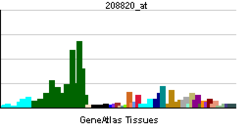In Mantle Cell lymphoma, its most dreadful aspect is the fact that it is an incurable disease
which to most Oncologist means that there is an entrenched genetic driver that is not silenced by current therapy, and will go on to revive the disease.
The elevation of Cyclin-D1 is a patent suspect.
Our speculation however is that it is not that is present that gives a clue to this recalcitrant disease. It is what is missing. Why is it that a disease that look like CLL or small lymphocytic Lymphoma, would not have the CD-23 marker?
CD 23 expression seems to be linked to the protective Interleukin 4.
CD23 as commented here by several authors seems to not only be involved in Allergens presentation
but to overall presentation of Antigenes, and to DIFFERENTIATION AND DEDIFFERENTIATION.
ITS EXPRESSION SEEMS LINKED TO IL4. INDEED INCREASE OF IL4 HAS BEEN LINKED TO AN HYPERSENSITIVITY REACTION. Differentiation of white cell seems to be linked to favorable outcome through leading to Apoptosis, whereas dedifferentiation seems to be linked to cellular immortality. Also as it can be apparent, CD23 help with Antigen presentation and activation of class II Major Histocompatibility defense. The lack of CD23 therefore lead to a global tolerance of involved neoplastic cells and may contibute to tolerance of these cells as they penetrate tissues including the Central Nervous system.
One now wonder what would be the clinical consequence of Giving IL-4 to patient with mantle cell, Will it increase CD23 expression? will it have a role in Maintenance setting, Adding it to Interferon gamma could boost its effectiveness
Can infusion of CD23 molecule makes a difference in this disease?
was the disappearance of CD23 driven by CD21 as one can speculate based of french researchers notes listed below?
Read for your self!
======================================================================
THESE NOTES ARE FROM THE INTERNET! WE THANK RESEARCHERS MENTIONED HERE!
======================================================================
Our study shows that grade 3 FLs are more often CD23- than lower grade
FLs and that FLs in inguinal LNs are more frequently CD23+ than in LNs
from other sites. Furthermore, our findings also indicate that survival
is significantly better in CD23+ FLs.(OLTEANU H ET AL)
Expression of CD23 was more frequently detected in grade 1 FLs than in
other grades (grade 1, 37%; grade 2, 18%; grade 3, 23%; transformed,
6%). (THORNS ET AL)
There are two forms of CD23: CD23a and CD23b. CD23a is present on follicular B cells, whereas CD23b requires
IL-4 to be expressed on
T-cells,
monocytes,
Langerhans cells, eosinophils, and macrophages.
[1] (WIKIPEDIA)
Human lymphocytes shed a soluble form of CD21 (the C3dg/Epstein-Barr virus receptor, CR2) that binds iC3b and CD23
Véronique Frémeaux-Bacchi ET AL...
It has many biological roles, including the stimulation of activated
B-cell and
T-cell proliferation, and the differentiation B cells into
plasma cells.
It is a key regulator in
humoral and
adaptive immunity.
IL-4 induces B-cell
class switching to
IgE, and up-regulates
MHC class II production. IL-4 decreases the production of Th1 cells, macrophages, IFN-gamma, and dendritic cell IL-12.
Overproduction of IL-4 is associated with
allergies.
[2]
The regions of CD23 responsible for interaction with many of its known
ligands, including IgE, CD21, major histocompatibility complex (MHC)
class II and integrins, have been identified and help to explain the
structure–function relationships within the CD23 protein. Translational
studies of CD23 underline its credibility as a target for therapeutic
intervention strategies and illustrate its involvement in mediating
therapeutic effects of antibodies directed at other targets. (M. ACHARYA ET AL)
The metalloprotease responsible for CD23 release from cells is ADAM10 [
24,
25],
Affinity-based approaches demonstrated that αvβ3 was also a functional receptor for CD23 in monocytic cells [
38],
again leading to cytokine release, and that αvβ5 is a sCD23 receptor
linked to growth and survival of human B cell precursors [
51]. The αv integrins recognize a short tripeptide motif of arg–lys–cys (RKC) in CD23 in a carbohydrate-independent interaction [
51] and the affinity of the αvβ5–derCD23 interaction is approximately micromolar [
51], which is broadly equivalent to that found for the derCD23–CD21 interaction [
44].
It is not known whether the β2 integrins also recognize the same RKC
sequence bound by αv integrins. The binding sites for CD23 on the αv and
β2 integrins remain to be elucidated, but available data suggest that
this is distinct from the site on the integrin
Clinical and Experimental Immunology
Blackwell Science Inc
CD23/FcεRII: molecular multi-tasking
M Acharya, G Borland, [...], and W Cushley
Abstract
CD23
is the low-affinity receptor for immunoglobulin (Ig)E and plays
important roles in the regulation of IgE responses. CD23 can be cleaved
from cell surfaces to yield a range of soluble CD23 (sCD23) proteins
that have pleiotropic cytokine-like activities. The regions of CD23
responsible for interaction with many of its known ligands, including
IgE, CD21, major histocompatibility complex (MHC) class II and
integrins, have been identified and help to explain the
structure–function relationships within the CD23 protein. Translational
studies of CD23 underline its credibility as a target for therapeutic
intervention strategies and illustrate its involvement in mediating
therapeutic effects of antibodies directed at other targets.
Keywords: CD23, cytokines, IgE, immunoregulation, integrins
Introduction
Immune
responses are subject to regulation at many levels, including the
influence of different groups of cytokines, cell–cell contact via
adhesion interactions and receptor-mediated positive and negative
feedback circuits. The low-affinity receptor for immunoglobulin (Ig)E,
also known as FcεRII or CD23, participates in all these regulatory
processes, either as a membrane-bound glycoprotein or as a freely
soluble protein. Structural biology approaches have revealed the fine
molecular details of the soluble CD23 (sCD23) protein and the
interaction surfaces used by sCD23 to bind its various ligands, and
molecular biological and mutagenesis studies have defined critical
residues involved in performance of biological functions. CD23 has been
suggested to have utility as a diagnostic marker in a range of diseases
and to be implicated in the cellular and molecular processes associated
with a variety of pathological states; the latter feature has made CD23 a
target for therapeutic intervention.
General features of CD23
CD23 was defined initially as the low-affinity receptor for IgE [
1,
2].
As a membrane protein, CD23 is a type II transmembrane glycoprotein of
approximately 45 kDa molecular weight comprising a large C-terminal
globular extracellular domain that is strikingly similar to C-type
lectins, followed by a stalk region bearing several repeats that serve
as a putative leucine zipper that are important in CD23 oligomerization;
the stalk region is followed by a short extracellular sequence (in
human CD23), a single hydrophobic membrane-spanning region and a short
N-terminal cytoplasmic domain [
3–
7] (). CD23 is expressed in T and B lymphocytes [
8], polymorphonuclear leucocytes [
9–
11], monocytes [
10,
12], follicular dendritic cells [
13], intestinal epithelial cells [
14] and bone marrow stromal cells [
15],
and its expression to subject to regulation by a number of stimuli. In
humans, CD23 is encoded by an 11-exon gene, FCER2, located at chromosome
19p13.3 [
16], in a cluster with the DC-SIGN and DC-SIGNR genes [
17]; the murine equivalent is located on chromosome 8 [
18]. CD23 differs dramatically from the high affinity receptor in terms of structure. FcεRI has multiple subunits [
5,
6,
19],
whereas FcεRII is comprised solely of a CD23 polypeptide. As the names
suggest, their affinities for IgE differ (FcεRI binds IgE with a K
D∼ 1 nM while monomeric CD23 interacts with IgE with a K
D∼ 0·1–1 µM), although the membrane-bound form of CD23 is trimeric [
20]
and the contribution of the avidity of the trimer for ligand yields a
net affinity closer to that of the high-affinity receptor and comparable
to that of FcγRI for IgG monomers [
21]). Signalling pathways and functional consequences of ligand binding to the receptors are also different [
22,
23];
for example, cross-linking of FcεRI leads to degranulation of mast
cells and release of a number of potent pharmacologically active
mediators, while engagement of membrane-bound CD23 suppresses the
production of IgE by B lymphocytes.
Primary structural features of human CD23. (a) The 321 amino acids that comprise the primary structure of human CD23a [
1,
2,
55]. Individual contact residues or binding regions for CD23 ligands are shown in green (major histocompatibility complex class
...
In
addition to its role as a low-affinity receptor for IgE, CD23 can also
be released from cell surfaces as a range of freely soluble CD23 (sCD23)
proteins of 37 kDa, 33 kDa, 25 kDa and 16 kDa, all of which bind IgE
and have cytokine-like activities. The metalloprotease responsible for
CD23 release from cells is ADAM10 [
24,
25], which cleaves at the C-terminal side of either ala
80 to generate the 37 kDa sCD23 molecule or arg
101 to yield the 33 kDa species [
25].
Mice lacking ADAM10 expression in B cells display defective release of
CD23, confirming that ADAM10 is necessary for CD23 cleavage and release
in vivo[
26].
A further naturally occurring sCD23 fragment is derCD23, produced by
action of the der p1 protease found in the faeces of the house dust mite
Dermatophagoides pterronysinus; der p1 cleaves between ser
155/ser
156 and glu
298/ser
299 in CD23 to yield the 16 kDa derCD23 fragment [
27,
28].
The kinetics and affinity of the interaction of sCD23 with IgE and the
ability of sCD23 to diminish or enhance IgE synthesis in stimulated B
cells is linked to its oligomerization state. Thus, monomeric sCD23
species, such as derCD23, show monophasic kinetics of interaction with a
Cε2–4 domain construct of the IgE Fc region that is of low (micromolar)
affinity, and inhibit IgE synthesis in activated B cells [
29].
By contrast, trimeric sCD23 molecules display a biphasic interaction
with IgE Fc fragments, including a higher affinity component (10–100
nM), and enhance IgE synthesis by activated B cells [
29].
The other cytokine activities of sCD23 species have been best studied
in human models, and it is clear that sCD23 is highly pleiotropic ().
Thus, in the B cell compartment, sCD23 sustains the growth of activated
mature B lymphocytes, possibly via an autocrine mechanism [
30–
32],
promotes differentiation of germinal centre centroblasts towards the
plasma cell pool [in association with interleukin (IL)-1α][
33], and allows B cell precursors to evade apoptosis [
34]. In other lineages, sCD23 promotes differentiation of myeloid precursors [
35], thymocytes [
36] and bone marrow CD4
+ T cells [
37], again in association with IL-1α, and also drives cytokine release by monocytic cells [
38].
Given its roles in lymphocyte survival and cytokine release by
monocytes, it is no surprise that sCD23 has been linked to the
pathophysiology of neoplastic and autoimmune inflammatory conditions
(see below).
Pleiotropy
of human sCD23. The effects of sCD23 on B cells, T cells and myeloid
cells are illustrated showing biological responses and, where
appropriate, signalling responses. An asterisk (*) indicates that the
observed effect required the presence of ...
CD23 ligands and signalling
CD23
has multiple ligands, including IgE, CD21 and members of two families
of integrins. The principal ligand is IgE, which is bound by both
membrane-bound and soluble trimeric CD23 species. The site recognized by
CD23 resides in the Cε3 domain of IgE protein and CD23 sterically
hinders IgE binding to FcεRI; binding of IgE to CD23 is
carbohydrate-independent (i.e. does not require any lectin-like activity
of the head domain). The next best characterized ligand for CD23 is
CD21 [
39]. The interaction with CD21 depends on short consensus repeats in CD21 [
40] and occurs when the proteins are freely soluble in solution (sCD21–sCD23 complexes are readily detected in plasma [
41]),
or are membrane proteins. In the case of membrane proteins, activation
of human B cells promotes homotypic adhesion, and the cell clusters are
disrupted by anti-CD21 or anti-CD23 antibodies [
42], indicating that these two membrane proteins can interact functionally in
trans. There is no equivalent homotypic adhesion in murine B cells [
43]. The interaction of CD23 with CD21 involves both carbohydrate-dependent and independent interactions [
40], and the interaction of derCD23 with CD21 is approximately micromolar (K
D∼ 8·7 × 10
−7 M) [
44]. CD23 can also interact in
cis and
trans
with major histocompatibility complex (MHC) class II proteins, in a
carbohydrate-independent manner, using structures in the CD23 protein
that are located in the stalk region of the molecule [
45]. This interaction is believed to facilitate antigen processing and presentation by antigen–IgE complexes captured by CD23 [
46].
The first CD23-binding integrins to be identified were the αMβ2 [
47,
48] and αXβ2 [
47]
members of the leucocyte integrin family. The ability of anti-integrin
antibodies to inhibit binding of CD23 to monocytes or to mimic the
effects of CD23 on the cells indicated that these integrins bound CD23
and were linked functionally to monocyte responses to CD23 [
47–
50]. Affinity-based approaches demonstrated that αvβ3 was also a functional receptor for CD23 in monocytic cells [
38],
again leading to cytokine release, and that αvβ5 is a sCD23 receptor
linked to growth and survival of human B cell precursors [
51]. The αv integrins recognize a short tripeptide motif of arg–lys–cys (RKC) in CD23 in a carbohydrate-independent interaction [
51] and the affinity of the αvβ5–derCD23 interaction is approximately micromolar [
51], which is broadly equivalent to that found for the derCD23–CD21 interaction [
44].
It is not known whether the β2 integrins also recognize the same RKC
sequence bound by αv integrins. The binding sites for CD23 on the αv and
β2 integrins remain to be elucidated, but available data suggest that
this is distinct from the site on the integrin that binds matrix
proteins by recognition of arg–gly–asp (RGD)-type sequences [
51].
Because
CD23 exists in membrane-bound and soluble forms, it can both deliver
and receive signals. Thus, sCD23 has been demonstrated to drive nitric
oxide (NO) production, cyclic adenosine-5′-monophosphate (cAMP)
synthesis and cytokine release from monocytic cells [
50]
and, in this case, integrins appear to act as the receptors for the
sCD23 protein. It is clear in human monocytic cells that stimulation of
the αMβ2 and αXβ2 integrins with specific monoclonal antibodies (mAbs)
both mimics the effect of sCD23 on the cells and triggers the
mitogen-activated protein (MAP) kinase cascade [
49] and activates nuclear factor (NF)-κB [
50].
Similarly, sCD23 activates extracellular regulated kinase (ERK)
phosphorylation and, to a much lesser extent, the phosphatidyl insitol 3
(PI-3) kinase pathway in human B cell precursors; the extent and
kinetics of ERK phosphorylation are modified by inputs from both
G-protein-coupled receptors (CXCR4) and receptors with intrinsic
tyrosine kinase activity [platelet-derived growth factor receptor
(PDGFR)][
52].
In broad terms, CD23a is expressed constitutively in B cells while
transcription of the CD23b isoform is subject to up-regulation following
Epstein–Barr virus (EBV) infection [
56], stimulation by IL-4 in B cells [
57] or monocytes [
12] or by engagement of CD40 on B cells [
58]. Elements in the human CD23a and CD23b promoters that are responsive to defined stimuli (e.g. IL-4, CD40L) have been mapped [
56,
59].
Transitional immature B cells undergo apoptosis and fail to proliferate in response to BCR cross-linking, thus representing
a target for negative selection of potentially autoreactive B cells
in vivo. In agreement with recent reports, transitional B cells were divided into developmentally contiguous subsets based on their
surface expression of CD23. When transferred, CD23
+ transitional B cells readily localized to the splenic follicles and the outer PALS. Compared with CD23
− transitional B cells, CD23
+ transitional B cells proliferated more vigorously and were rescued from BCR-induced apoptosis to a greater degree, by T cell
help signals. However, both CD23
− and CD23
+
transitional B cells failed to up-regulate CD86 (B7-2) in response to
BCR ligation. These findings demonstrate that phenotypically
defined subsets within the transitional B cell
population are functionally distinct. Specifically, responsiveness to T
cell
help is a late acquisition corresponding to the
stage when the B cells gain access to peripheral compartments enriched
in
antigen and activated T cells. The failure of
transitional B cells to up-regulate CD86 to BCR-mediated stimulation
suggests
a unique interaction between transitional B cells
and T cells with implications for tolerance in the T cell compartment. (chung ET al)





